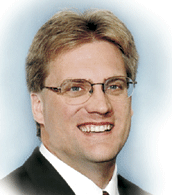

 |
 |
 Dr. Brent Wogahn
repair of an unhealed pilonidal incision by cleft closure replaces the defect at the depth of the cleft with a skin flap over a thick pad of fat
|
Pilonidal disease causes a pain in the...The treatment of pilonidal disease can be a very frustrating situation for both the affected individual and the treating physician. Pilonidal disease is a condition which affects the hair follicle overlying the sacral or tailbone region of the buttocks. It predominately affects younger people of both sexes. Proposed causes for the disease include activity level, cleanliness, gravity and trauma. People who have a deep cleft in the upper buttock crease seem to be more likely to develop the condition. The problem begins within the skin. The deepest elements of the skin
are the hair follicles. In the sacral or tailbone region, the skin is
closer to the underlying bone. Research suggests that repetitive trauma
such as riding on a hard seat, multiple Pilonidal disease can develop suddenly or exist as a low grade infection for many years. Patients usually complain of buttock discomfort or pain such that he/she does not want to sit down. There is usually an area of very painful redness and swelling, and there may be a foul smelling drainage from the underlying infection. The patient may complain of fever and chills. At this point, an abscess has formed. When surgery is required, a procedure called a “cleft closure” has been found to be very successful. With this technique, the surgeon first removes all of the inflamed tissue, and then takes the soft fatty tissue from the side of the buttocks and rotates it to cover the tailbone and provide additional cushioning. This can help to prevent the patient from getting another pilonidal cyst in the future. Because the causes of pilonidal disease are poorly understood, there are few recommendations for prevention. Maintaining good hygiene is one suggestion, as well as to avoid repeatedly sitting on hard surfaces for prolonged periods of time. See your physician if you think you might have Pilonidal disease. There is relief for this painful condition. For more information, or to schedule an appointment
with |
|